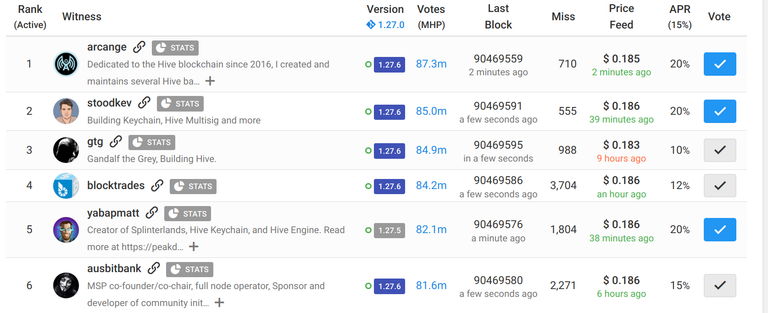Earn More $HIVE By Becoming A Witness
In addition to writing/curating content, powering up (staking) your $HIVE, and submitting spending proposals, you can earn HIVE by contributing to its decentralized infrastructure.
As mentioned a couple of posts ago, witnesses earn 10% of the HIVE inflation. These rewards are distributed to the community members who are operating the servers that Hive runs on.
In this article, we'll discuss the difference between Bitcoin mining and Hive block producing, as well as how witnesses work to support the Hive blockchain.

Mining Bitcoin
The first way to earn cryptocurrency was to mine Bitcoin. This entailed downloading and installing the Bitcoin node software on your personal computer, and then activating the mining option.
These days, most people who want to earn Bitcoin end up joining mining pools, because it has become too difficult to mine blocks on your own (the compute power and electricity required is too expensive for the average user).
When it comes to Hive, operating a node is within reach of the average user.
Hive Witnesses
Hive uses an energy efficient consensus model called Delegated Proof of Stake (dPoS), instead of Bitcoin's Proof Of Work (PoW). In the Hive ecosystem, nodes are referred to as witnesses, and anybody can set one up and join the network.
Users who hold Hive Power (HIVE tokens that have been powered up / staked) then vote on which witnesses will validate transactions and produce blocks. Users also have the power to remove witnesses who are acting against the best interests of the network.
As opposed to Bitcoin, where a new block is mined every 10 minutes (on average), a new block is signed and added to the Hive blockchain every 3 seconds, making decentralized applications like InLeo and Splinterlands possible.

Most blocks are signed by the top 20 witnesses, however there are dozens of backup witnesses that also earn rewards for periodically signing blocks. You can see how long it has been since a particular witness signed a block by visiting the witnesses page on hive.blog.
As per the Hive whitepaper:
While the 20 consensus witnesses have an equal opportunity to sign blocks, witnesses ranked 21 and further are treated as backup witnesses. The number of signing opportunities they receive is directly proportional to the staked support behind them.
Getting into the top 20 witnesses is no easy task, and would require getting the support of some major whales. However, it's fairly easy to become a backup witness if you have some technical skills. As a backup witness, your earnings will depend on how much voting power has been delegated to you (but it's the experience that counts, right?).
Server Costs
Based on some light research, the minimum hardware requirements to run a (backup) witness (top 20 witnesses require more capacity) are 32GB of memory and 500GB SSD drive. The monthly cost for a dedicated server with these specs will range from $50-$100/month.
Voting for Witnesses
If you want to support a community member who is running their own witness you can vote for them from a number of front-end interfaces, including PeakD. This is also a good way to demonstrate to the community that you are invested in the Hive ecosystem.
Until next time...
If you learned something new from this article, be sure to check out my other posts on crypto and finance here on the HIVE blockchain. You can also follow me on InLeo for more frequent updates.
Resources
Hive Whitepaper [1]
Images Courtesy of Venice AI [2]
Posted Using InLeo Alpha